Retro Review: Broken Link
7 min readOdo is afflicted with a disease by the Founders in order to force him to face judgment for having killed a changeling.
Plot Summary: While quarreling with Garak over the tailor’s efforts to play matchmaker for him, Odo collapses and is found to be losing his ability to maintain humanoid form. When he tries to leave the infirmary, he starts to disintegrate. Bashir realizes that only the Founders may be able to help Odo and accompanies Sisko along with much of the senior staff on a trip to the Gamma Quadrant to find them. Garak comes along to distract Odo and to attempt to speak to the Founders on behalf of Cardassian prisoners of war. The Jem’Hadar surround the Defiant and beam the female shapeshifter whom Odo has met before onto the ship. She admits that the Founders made him ill to force him to return to them so that they can judge him for the crime of killing another changeling. Though she agrees to take him to her planet for treatment, she demands that the Jem’Hadar be allowed to control the Defiant’s navigation so that the Federation can’t discover where the Founders now live. Though Sisko is reluctant to permit this interference and Garak is furious to learn that all the Cardassian combatants have been killed by the Dominion, Odo insists that he wants to join with his people. He enters the Great Link, only to return as a solid, having been turned into a human by the shapeshifters who don’t believe that he ever can be one of them. They leave his face unfinished as a reminder of what he has sacrificed. Meanwhile, Worf discovers Garak attempting to blow up the planet, willing to sacrifice himself and the rest of the crew in order to destroy the Dominion. Though Worf is able to stop Garak, the crew is shocked yet again upon returning to DS9 to learn that Gowron is now preparing to go to war against the Federation. A still-reeling Odo recalls that while he was in the Great Link, he saw Gowron’s face, and realizes that the leader of the Klingons is not himself, but a changeling.
Analysis: When “Broken Link” first aired, it was impossible to know that it would become, after several abortive starts, the pivotal episode for the development of the Dominion War and the changes in the Klingon Empire that would set Deep Space Nine apart from (and, I would argue, above) other Star Trek shows. Several series-changing events occur in a short span of time: Odo becomes ill with a manufactured disease and finally begins to understand his people, Garak reveals the extent of his ruthlessness, Starfleet learns that there may be a shapeshifter in a top position among the Klingons. All of these events will resonate and recur in future seasons as the tables are turned on the Founders, Sisko takes advantage of Garak’s skills as an assassin, and Worf’s involvement in unraveling the Klingon crisis brings him back into Klingon culture. Yet when “Broken Link” first aired, I hated it. It was impossible to foresee all the wonderful twists yet to occur. What I saw was that, in a season that had severed Worf and Quark’s ties to their homeworlds, distanced Dax and Kira from their respective people, and cemented Garak’s status as an exile from Cardassia, now Odo too was cut off seemingly forever from his own kind. The project appeared to be to glorify human bonds and human values at the expense of anything set up as alien. There were still characters with wrinkly noses and pointy ears walking around the Promenade, but “Broken Link” looked like a sign that Gene Roddenberry’s dream of infinite diversity in infinite combinations was to be reduced to glorifying Earth and its people. It felt like that terrible moment in The Undiscovered Country when an increasingly bigoted James T. Kirk informs Spock that “everybody’s human,” just before a calmly logical Spock calls this attitude insulting.
In such an atmosphere, it’s a breath of fresh air to see Garak at his most vicious, and to have Worf put him down in a physical brawl rather than have one of the Starfleet officers do it in a lecture about values. Garak’s flip “Don’t tell me you’d object to a little genocide in the name of self-defense?” to the Klingon is trumped by the retort, “You fight well…for a tailor.” It’s even better because we’re permitted to believe at first that Garak is exaggerating when he brags to an ailing Odo about the many assassinations he carried out as a gardener on Romulus; how awesome is it to realize that the stories are probably true, and what a perfect set-up later for one of the series’ finest episodes, “In the Pale Moonlight,” when a Sisko who can’t pretend he didn’t know what Garak was asks for his help in dealing with a war-time Romulan crisis that he knows but won’t admit can be resolved with a couple of murders. In retrospect, now that we know what the Founders will do to the Alpha Quadrant, given the disease they give to Odo and the far worse disease that Starfleet gives to the Founders, I can’t decide whether to see Garak as the dangerous extreme of Vulcan logic or the perfect epitome of the equation whereby the needs of the many outweigh the needs of the few or the one. He knows that the Jem’Hadar will kill him and everyone on the Defiant for his planned assault on the Founders, but it isn’t selfish ego that makes him want to exterminate them. He sees his attack as revenge for the slaughter of Cardassians and protection for the rest of the Alpha Quadrant, even species he doesn’t like. How refreshing that soppy human values about the intrinsic worth of every life form haven’t touched Garak, and what a perverse relief to know that there are still humans in Section 31 who think like him.
It’s likely that changeling values are also radically different from human values, but we’re really robbed of any opportunity to find out. It’s no surprise that they come back to get Odo, admitting that they’ve been spying on him all along and they’re willing to let him die if he won’t come home for judgment, just as it’s no surprise that they killed every Cardassian who opposed them instead of taking prisoners. They treat solids alternately as animals deserving of condescension and predatory beasts who need to be put down. I know there’s a school of thought which claims that they really thought they were doing Odo a favor, giving him what he used to wish for, making him a solid, but if that had been true they wouldn’t have left him an unfinished face as a reminder of all he’d lost. To the Founders, being a solid is a terrible fate. What we never learn is why, because we get almost no explanation of what goes on in the Great Link apart from Odo’s plot-driven memory of seeing Gowron’s face. What is their basis for judging the only changeling who has ever harmed another, an act he committed to save many humanoid lives? What sort of defense does he offer? Are such terms meaningless in a link where everyone shares thought and feeling, where the Founders probably know what it felt like to be Odo at the moment of the killing? The writers don’t seem to have thought out this alien society any more fully than the societies from which Quark, Worf, Garak, and Dax are now living apart. The changelings are even more different from humans than the Borg, since their collective consciousness does not wipe out individuality nor seek to make others like themselves. This is worth exploring! If only Data would show up and for once not blather about how he wishes he could be human but instead emphasize the things humans could learn by wishing to be something else.
Garak’s purported jealousy of Odo, who is about to experience many new things as a human, rings particularly hollow, since Garak knows better than anyone that pleasurable new experiences do little to alleviate a longing for home. If DS9 has an overall fourth season theme, it’s that the crew has become a unified unit, even a family; no more divisiveness over Bajoran vs. Federation interests, no more struggles with dark secrets from families or past lives. Worf has made a permanent home on the Defiant, Quark has been collectively adopted by the residents of the station, Kira has moved in with the O’Briens, Dax has realized she’d choose rejoined love over Trill law, Garak has made friends, and if Sisko’s romantic life has undergone a sharp disruption, at least he has Jake and the others looking out for him. But there’s an insidious flip side to this, a hint that the way to deal with outsiders is to turn them into insiders…to make them more like everyone else. Hence at this juncture we have a tamed Dukat, a defanged Winn, and Klingons whose bad behavior suddenly looks attributable to outside influences. I don’t object to the idea that deep down all sentient beings share certain core qualities, but here it’s tinged with the arrogance that people are best when they’re most like ourselves, that it’s less important to learn from one another’s differences than to file them down and reconcile them whenever possible. It feels like the opposite of Roddenberry’s original legacy, where the supposedly universal desires for food, sex, shelter, safety, and happiness were explored within the confines of widely varying cultures and traditions with respect for all. I’m not sorry that a war will be the price for that legacy to return.
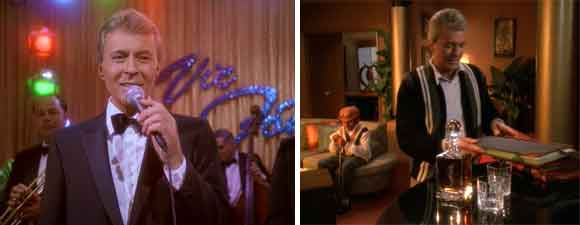
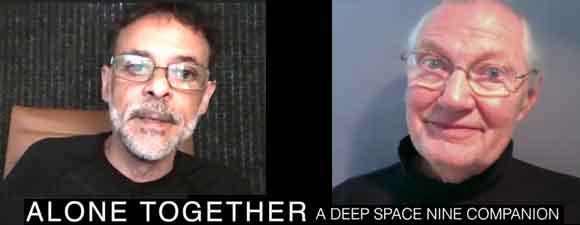
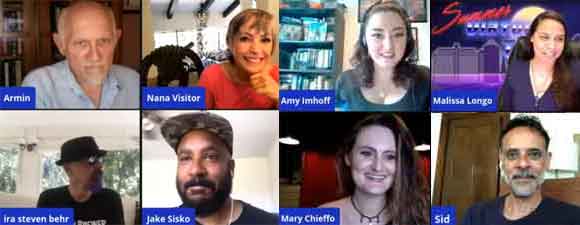
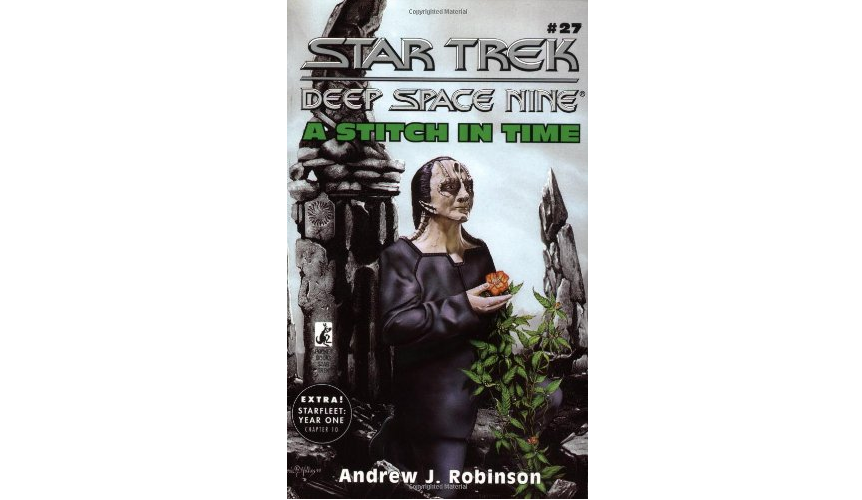

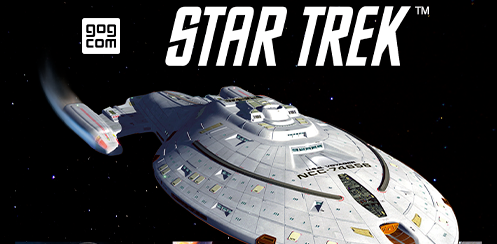
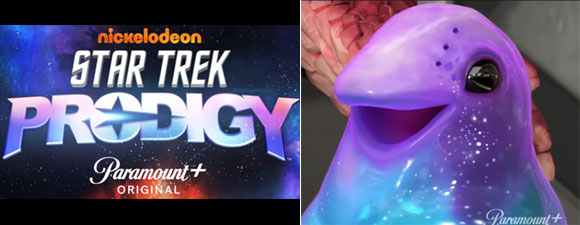
What cheeses me off about this episode is that Odo didn’t kill the other Changeling in the episode “The Adversary” (3×26), He merely push (it) away to defend himself, who only unintentionally fell onto the warp core of the Defiant. Even more worrying was the intent of this Changeling to fight Odo in the first place (being the mostly the instigator of the conflict.) Its own desire to sacrifice or kill all of Odo’s friends, and force Odo to defend them, is what caused the unintended circumstances of the death. You’d really think the Changeling would have known about Odo and his feelings/failings before confronting him or trying to force the issue and get Odo to return to the Great Link.
This was actually the THRID major attempt by the Founders to get Odo to return.
Knowing that the Alpha Quadrant need to be subdued by the Founders, found that Odo was likely to significantly impeding their bigger plans. Their main question was what they could do to get Odo out of the way; solved easily by removing his ability to shapeshift. (Anyway, inflicting Odo with a potentially fatal disease in my opinion is exactly the same as the same attempt to harm or kill another Changeling by the Founders themselves! The actual line is “No changeling has ever harmed another”, but this other Changeling WAS harming him! )
The whole story of Odo killing another Changeling was trumped up, and his punishment for the accidental death was superficial. Getting Odo out of the way was their primary aim.
Michelle has just clearly missed this very important point.
Where to even start…
“It felt like that terrible moment in The Undiscovered Country when an increasingly bigoted James T. Kirk informs Spock that “everybody’s human,” just before a calmly logical Spock calls this attitude insulting.”
Firstly, by the time Kirk uttered that, he had already admitted that he had been wrong. It was during the dining on ashes sequence, a point in the film where both Spock and Kirk were reflective of the mistakes they had both made. To suggest that he made that comment out of bigotry is just stupid or a lie intended to support the rest of your preposterous understanding of the material.
Moving on…
“How refreshing that soppy human values about the intrinsic worth of every life form haven’t touched Garak, and what a perverse relief to know that there are still humans in Section 31 who think like him.”
And yet, just moment earlier, you said this:
“There were still characters with wrinkly noses and pointy ears walking around the Promenade, but “Broken Link” looked like a sign that Gene Roddenberry’s dream of infinite diversity in infinite combinations was to be reduced to glorifying Earth and its people.”
Let’s be very clear: Gene Roddenberry’s vision was always Earth and American centric. It was viewed through a utopian notion of multiculturalism, but it was firmly ensconced in the idea of the melting pot… he envisioned the entire Federation as a melting pot… Melted into what? Americans. Plain and simple. Every element of TOS oozes it.
The character trope of Spock, the alien or otherwise outsider that was replicated in virtually every later Trek, was always shown as making progress and being his best self when he turned his back on his pure Vulcan heritage and embraced his humanity. Data was trying to be human. Etc.
Infinite Diversity in Infinite Combinations to Gene Roddenberry meant exactly that as much as All men are created equal meant exactly that to Thomas Jefferson… namely, not that at all.
So, if we’re going to hold up Gene Roddenberry’s vision of IDIC, then what we’re really holding up is utopian multiculturalism within the American melting pot………… And, beyond that, Gene Roddenberry’s primary vision wasn’t IDIC as much as it was the growth of humanity beyond the pettiness that you’re suggesting is so refreshing and is a sine qua non for Roddenberry……..
If anyone was unsure how detached from Star Trek lore, reality, and the mythos, well… they shouldn’t be now.
That the Founders were looking to “neutralize” Odo sure makes sense considering he killed a fellow Changeling in self-defense. But then what was the point of restoring his shapeshifting ability midway through Season 5? To lay the same old guilt trips on him?
On the one hand, Michelle makes a good point that it does seem a tad self-absorbed to assume that every alien race wants to be like us. Eddington expressed such sentiments in his speech after his defection–“No one leaves paradise. Everyone should want to be in the Federation.” But I agree that saying Kirk’s statement that everybody is human was bigoted completely misses the point of that exchange. He meant that everyone is fallible yet still strives to better themselves.
Exactly. If anyone watches that sequence and comes away thinking that Kirk has actually just insulted him, they really need some desensitivity training… it wasn’t remotely the point.
As for Michelle’s notion and your example of Eddington, that was intentionally done to reflect the values of Star Trek and question their legitimacy… It was to say, okay, we’ve spent 30 years telling you humans and the Federation were this one way, all the while, in real life, multiculturalism has failed miserably, but rather than question whether multiple cultures can fully co-exist, in reality and in Star Trek, we conclude that the basic fundamentals that created the society are somehow deficient. So, in the real world we think the preservation of every culture is worthwhile, except the one that created this civilization. So, too, in Star Trek, once they got to DS9 and wanted to strip away some of the upper layers of the mythos, the first thing to question is, after seeing what a melting pot culture actually does, is the Federation, and by extension American society, actually the worthwhile benevolent entity it would purport? Eddington, the Maquis, the later attack on Earth, all of it was about American society not actually being what American society was supposed to be in their minds, which was more liberal and more multi-cultural and less basically American. And by showing that humans had gotten to the point of arrogance within the Federation, it was meant as another stab at the US role in post cold war earth politics.
But, and here’s the sad truth, the Federation would never work as a multi-cultural organization. Only as a melting pot, where everyone at least partially conformed, would any sort of interstellar organization that was that integrated actually work. And the only way to have a melting pot is to have a base culture for the other flavors to melt into… and for the Federation it’s Americanized Earth… And Gene Roddenberry wouldn’t have had it any other way.
Yes, but the restoration of Odo in “The Begotten” was not by the Founders but by the accidental discovery of the baby Changeling, and before its own death, it was absorbed into Odo – repairing his shapeshifting abilities and to be able to change into a liquid state. (Likely the Founders had nothing to do or control with this happening, and would have been worried in having him yet again as a loose cannon in the Alpha Quadrant.)
When Odo was a solid, he learnt about the limitations of being one, and when he was restored, his sympathies were even more polarised to his loyalty to his friends and DS9. To the storyline, this experienced knowledge was passed on to the Founders when he rejoins his people at the very end of the DS9 series. I.e. Not to fear the solids.
(I’d suggest, you should watch these significant Odo DS9 episodes in order; I.e. “The Alternate”, “The Adversary”, “The Search, Part I & II”, “Broken Link”, “The Begotten” + possibly even “Chimera”)
“But, and here’s the sad truth, the Federation would never work as a
multi-cultural organization. Only as a melting pot, where everyone at
least partially conformed, would any sort of interstellar organization
that was that integrated actually work.”
I’m not sure how much sense this makes within the fiction, since groups have to meet the standards before they can be invited to join the Federation (or, in some cases, to even be contacted at all). It doesn’t seem they go around telling people “conform to x,” but rather that there is no question of eligibility for those civilizations that do not already do business that way. I guess you could imagine a version of Star Trek where the Federation goes around letting planets without enough food starve and so on, only letting them “join” the protection racket when they agreed to change all their values to Federation ones, but I know there’s no one here so disingenous as to suggest that the episodes support this.
I also find the whole “no one leaves Paradise” thing to be highly overblown. The Federation was not actually objecting to people’s desire to forfeit their citizenships—it was their attacks on the Cardassians which were the problem, because they could start the war again. A thorny situation, sure, but to reduce it to the Federation just throwing its weight around or restricting freedoms is a crude oversimplification.
And seriously, Eddington was a bad guy, and the writers were only “speaking through him” in the sense that he was antagonistic to Our Heroes and what they believed in.
I am familiar with every DS9 episode, thank you. Consider the next time Odo and the Female Changeling crossed paths, she said he had been forgiven, so I’m fairly certain restoring his shapeshifting ability was no accident. And with Weyoun identifying Odo as a Founder in “A Call to Arms”, that’s seems like too much of a coincidence. But yes, part of it might have been giving Odo a unique perspective since the lead Founder said that bringing him back to the Great Link was more important than conquering the Alpha Quadrant.
“I am familiar with every DS9 episode, thank you.”
I meant no slight. It is just those episodes together make great insights into Odo and Changelings without the distractions of the rest of the story.
As for the Female Changeling forgiveness, it is hard to know the degree of her sincerity here. It might be another ruse.
As for “…so I’m fairly certain restoring his shapeshifting ability was no accident.” Are you saying the baby Changeling was send to Odo specifically? Letting another Changeling die to save Odo would immediately contradict “No changeling has ever harmed another”?
When Bajor is considering becoming a member of the Federation, it is made clear that they can never return to the type of civilization they once were with castes… as castes are specifically forbidden within the Federation. And, if I recall correctly, they specifically tell them exactly that when that fake Emissary guy shows up and wants Bajor to return to the way it was 200 years earlier. I’m not just making this stuff up as I go along.
Secondly, you suggest that Eddington was the villain, and thus does not take on the role of the writers’ own feelings. That’s true. I never said his feelings were their feelings… simply that his feelings illustrated to us what their feelings were… not by being the same, but in comparison. The character isn’t a proxy for the writers, he’s a proxy for Roddenberrian philosophy. Sisko and co were the actual opinions of the writers… When I suggested that Eddington illustrated their opinions, it’s in apposition to Eddington, the villain, not conformity to him…
I think the single scene Gene Roddenberry would’ve hated most from First Contact is the one where Lily confronts Picard and basically lays low the idea of a Roddenberry human. Take that, writ large, and apply it to DS9 in toto. They don’t accept the basic tenant of Roddenberry philosophy, which is the evolution of the intellect and disposition of mankind. These writers are suggesting we haven’t changed… we’re still just men. And it is, at this very point, that Star Trek stopped being allegory for humanity. When the humans are humans, it just doesn’t work… the aliens within Star Trek ARE the modern humans… at least that’s the way it’s supposed to be… But, when you have humans like Eddington running around, you really don’t need much simile.
As to groups not being allowed in the Federation if they don’t meet strict criteria, that’s true… and, at this point, it’s probably true that they don’t even consider societies that are too far outside the mainstream of Federation thinking. With that said, however, the sine qua non of the entire Federation is Earth… and without human influence at the beginning, changing each of those societies to conform to one closer to that which would be acceptable to humans, the Federation could have never existed… By the time of Enterprise, the people who hated Roddenberry’s vision were mostly gone… so, we basically got to see his vision of things, which was humanity being the lynchpin. The Vulcans were paranoid schemers who weren’t even following the true path of Surak. The Andorians were warlike losers in the shadows not just of P’Jem, but of all of Vulcan. The Tellarites were, and still are, douchebags, but wouldn’t remotely have been understood by the others were it not for the humans. Each of those other 3 made massive changes in the decade before the foundation of the UFP. Does that still happen? Probably not as much, because, as you point out, they probably seek the low hanging fruit that is already closely adhering to Federation standards… but back in the day when they needed new members? Not so much.
But then, under Roddenberry, even a planet that had already been accepted as a member of the Federation was subject to changes based on human mores. Look no further than the cloud miners of Merak II. They were already members of the Federation. The caste system was unacceptable. It was forced to stop… not because they thought it was wrong… because we thought it was wrong.
The dinner sequence in The Undiscovered Country is brilliant because it actually addresses all of this within the continuity. When Chekov quotes inalienable human rights, inalienable and human are keywords… Azetbur picks up on that instantly. The Klingons, having seen for 150 years what the Federation is up to is worried most pointedly about one thing: The destruction of their culture.
I think it’s pretty manifestly obvious that Roddenberry believed in the superiority of the American system and culture and that Star Trek was a melting pot to that end.
“Look no further than the cloud miners of Merak II. They were already
members of the Federation. The caste system was unacceptable. It was
forced to stop… not because they thought it was wrong… because we
thought it was wrong.”
They wouldn’t have concealed it from the Federation if they were proud of it. It seems they must have lied to qualify for membership in the Federation, then had the true state of affairs blown up by Our Heroes. Anyway, of course the miners thought it was wrong, and Droxine wavered at some point, right? I’m not sure how many of the Stratos residents even knew or understood what was happening in the mines. In light of later Trek, if not also what had come before, the whole plot makes no sense unless you consider the treatment of the miners was a secret.
As for Bajor, that was obviously a special case where political and military realities of being close to Cardassia forced them to consider Federation membership (and then NOT accept it ASAP), and the political debates about that among the Bajorans were part of the show. But this somewhat undermines your overall point, because the entire premise of the DS9 series is that the Federation provided Bajor with military protection and economic support even when it was *not* a member of the Federation and would not have qualified to be one. At no point do I recall anyone threatening to withdraw Starfleet protection against the Cardassians because some Bajorans bought into the fake Emissary and got pumped about following the outdated caste system. Membership was just for worlds with single governments who happened to arrive at the same values.
(No one would stick up for a caste system, anyway. It’s too simple to equate being against such a thing as “Americanism.”)
I’ll think about it this evening, but I’m sure I’ll have other examples beyond the cloud miners for you…
As for Bajor not joining the Federation and, yet, still being under its protective wing…… I was waiting for the part that isn’t an absolute corollary to the United States. Is Israel the 51st state? They’re our allies in a region controlled primarily by adversarial nations. We don’t control Israel. Israel often does things we don’t agree with. It doesn’t change the fact that we’re in a strategic alliance with them and that we give them gobs of money every year… not to necessarily become us, but because it’s in our strategic interests to do so… Similarly, as was pointed out many, many times on DS9, were it not for the wormhole, the Federation wouldn’t have near the interest in Bajor that it does. It sent Sisko there as a career ender, not to become the Emissary of the Prophets and commander of the lynchpin station within the entire quadrant for the next decade…. no, they sent him there to end his career, basically. So, suggesting that the United States doesn’t have anything corresponding to Bajor, a client state that isn’t a State… well… not so.
“(No one would stick up for a caste system, anyway. It’s too simple to equate being against such a thing as “Americanism.”)
The Indians wouldn’t? They still have a caste system.
And if we’re going by current, modern values, I would contend that for the last nearly 250 years, American values have massively influenced and changed the world…. So, yeah… Let’s go back 200 years and say whether they’re American values or Russian values or Greek values… I think you’ll come to see, we changed the world, and then the world forgot and is now pretending it all happened in a vacuum. Quaint, really… Just like Europe can navel gaze now, having had the luxury of doing so by being defended by the point of an American bayonet for more than half a century… Things change, and not so very long ago, the 1960’s, the world still considered American values exactly that… before the dark times, before we actually won that conflict without actually having to kill anyone. Oh well. Now we can pretend that these things just naturally sprang up from nothing instead of being brought there by the greatest freedom spreader the world has ever seen…. yeah……
So, I’ve given it extended consideration, and really, it’s the whole thing… Uhura isn’t particularly African, but she’s actually from Africa. Roddenberry had aliens actually come up with the American constitution. They used Lincoln in the series. They referenced the Declaration of Independence in Undiscovered Country. I could continue the list ad nauseum, but I think my point is quite obvious and quite obviously correct. I’m not saying that the ethos evoked in Star Trek is uniquely and only American. I’m not saying that human mores are only American… but I am saying that it isn’t eastern philosophy that drives humans in Trek. And while certain ideals may cross societal boundaries, the society being exemplified writ large is the American one. You could argue that that stems from it being an American production done by Americans… and you would likely be partly correct. However, it doesn’t change the fact that Roddenberry was doing a show that took the American ethic and model into the 23rd century. That’s not to say that Americans created any of those ideas, per se, simply that they are there because they are extensions of perceived American culture as of 1966. And, certainly, within Star Trek, humans are pivotal. I don’t think anyone would argue that, right? But those humans don’t span the gamut of humanity… they have all been amalgamated into one group… and whether it’s because of production or not, that group is Americans. I don’t think anyone should be offended by that anymore than Americans should be offended that in the future of Doctor Who everyone is British…